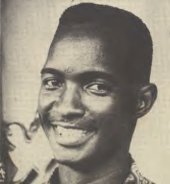I received this press release
from photographer / blogger Leslie Robertson Toney today about her 2013 carnival series ‘Blogging de
Carnaval’, on her website http://studiolafoncette.com.
From what I've seen so far I for one will be following her as this carnival season progresses.
Have a read of the release and
then enjoy her work on her website.
Leslie Robertson Toney
Studio Lafoncette Photography
www.studiolafoncette.com
studiolafoncette@gmail.com
1-868-774-2160
FOR IMMEDIATE RELEASE
Friday, 4th January, 2013
Carnival blog series launched
On January 1st, Studio Lafoncette Photography launched their third Blogging de
Carnaval series on the Web site: www.studiolafoncette.com. The series focuses on the
rich heritage, history and evolution of Trinidad Carnival. The blog uses original
photography by Washington DC-based Trini photographer Leslie Robertson Toney.
Every day, in the weeks leading up to Carnival Monday and Tuesday, Studio Lafoncette
will post photos and text related to mas, mas construction, Carnival performance art,
music, Carnival trends, and much more providing thorough background information to
readers. Studio Lafoncette will also post original photos and interviews with Carnival
veterans and masters such as the acclaimed fancy sailor Senor Gomez.
Blogging de Carnaval celebrates various aspects of Carnival that are sometimes
overlooked or forgotten in mainstream coverage. As Toney said in this year’s first blog
post, “Sankofa, the Adinkra symbol of the Akan people from what is known today as
Ghana, teaches us that we must go back to our roots in order to move forward. That is,
we should reach back and gather the best of what our past has to teach us, so that we
can achieve our full potential as we move forward...And today we also celebrate that in
our respective carnivals we have evolved and created something that is uniquely
Trinidadian (or Tobagonian, Grenadian, Vincentian, Brazilian, (New Orlean) American,
Bahamian, etc.) but that has a connection to The Motherland and other Motherlands.”
She invites followers to “Discover a culture beyond your imagination.” Blogging de
Carnaval can be accessed directly by visiting: http://studiolafoncette.com/blog/ Also
check out Studio Lafoncette on their Facebook page: Studio Lafoncette Photography or
follow them on Twitter @StudioLafoncett.
About Toney: Leslie Robertson Toney is a self-taught photographer with more than a
decade of amateur and professional experience. Her work has been featured in the
international exhibit Roots & Wings, FotoDC’s Cherry Blossom Photo Exhibit, the Art
Society of T&T’s members’ exhibit 2011 and at the New Horizons Gallery of the
Children’s National Medical Centre in Washington DC. Her work has also been
published in Photographer’s Forum Best of Photography 2011 catalogue when she was
a Best of Photography Finalist.











































